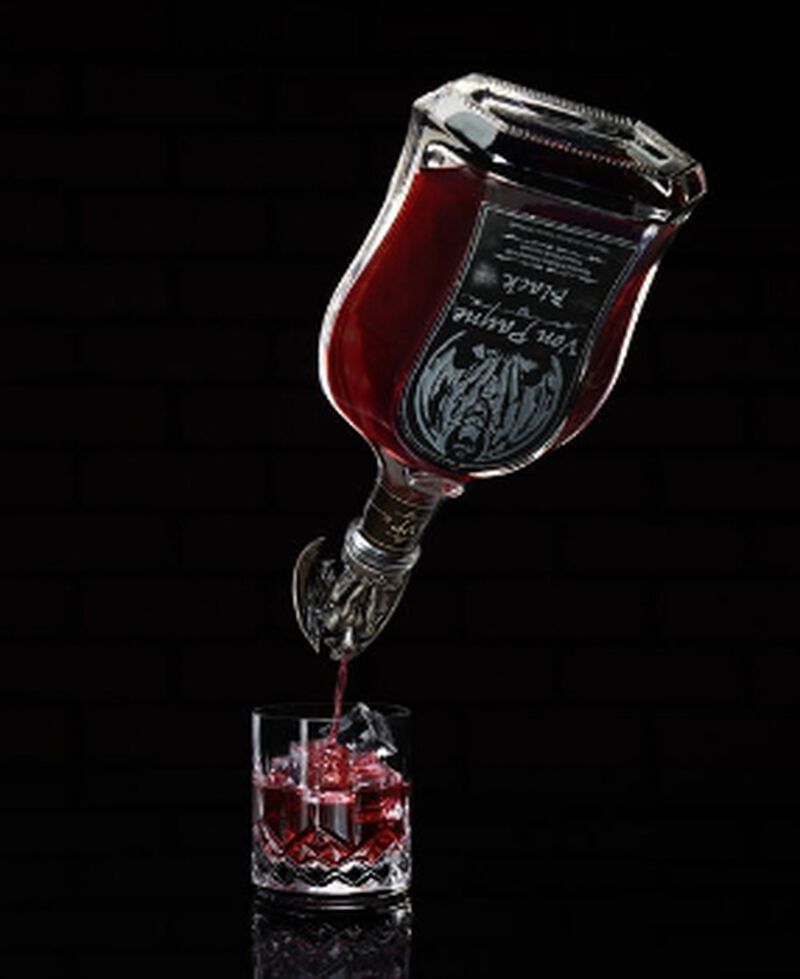
Von Payne Black Whiskey
Whiskey
Behind the Brand
Founder of Crystal Head Vodka
As one of the most beloved names in entertainment, Dan Aykroyd has won over the world with his comedy and music. It’s no surprise that he also leads the charge in celebrity-owned brands. But, much like his ownership in House of Blues, Dan isn’t just a silent partner — he has worked with an incredible team of artists and distillers to bring his vodka brand to life. We sat down with him to learn more about Crystal Head Vodka and what inspired this now-iconic vodka brand.
Well, I guess it really goes back to me wanting to just get access to a better tequila. I initially just wanted to make a better tequila available in Canada for my margaritas at the dock. That's the entire reason that I got into this business. So, I met JP DeJoria, the owner of Patrón tequila when he helped us open The House of Blues. He was one of our first investors.
One night I was with him, and we were hanging out at The House of Blues in Los Angeles. And he introduced me to Patrón tequila; this beautiful smooth, white, smoky tequila that I had never even heard of before. I knew of it, but I hadn't really tasted it. And I tried it, and it completely changed my view of tequila. I had the residual view of tequila as a bad hangover. You know, the technicolor mural in the backyard of a Mexican bodega kind of association. And I wasn't really a tequila fan back then. But I did like margaritas.
I only had the two inferior brands, so I said to JP, “Can I bring the Patrón into my little government liquor store in Canada?” And he said, “Well you have to bring it to the whole country.” So, he granted me the importation license of Patrón for Canada, and I was able to bring it into the country. Over a period of about six years, I turned it into one of the top luxury brands in Canada.
Other luxury brands are in there now, but now Canadians can enjoy what Americans have for years. This beautiful clean taste of Patrón and then I had the better fluid to work with at the dock, and I turned it into a great success for them. Bacardí bought out Patrón a couple of years ago. I'm out of that equation now, but that's what got me started.
It was going, the Patrón, because Canadians were tasting this beautiful fluid that they’d never had before. And I was quite happy with that success and was able to kind of let it rest a bit and look to other categories now.
I tasted a lot of vodkas, just looking at another category, and all of them seemed to have no taste at all, or a scratchy taste like the roughness of a cat’s tongue, or an over-viscosity, or a bad smell. I mean, it was amazing to discover the seemingly lack of appeal to me in these leading brands. And so I inquired, “why doesn't vodka taste like it's supposed to?” According to regulations, it’s actually supposed to be tasteless, odorless and colorless — but vodka should have a taste.
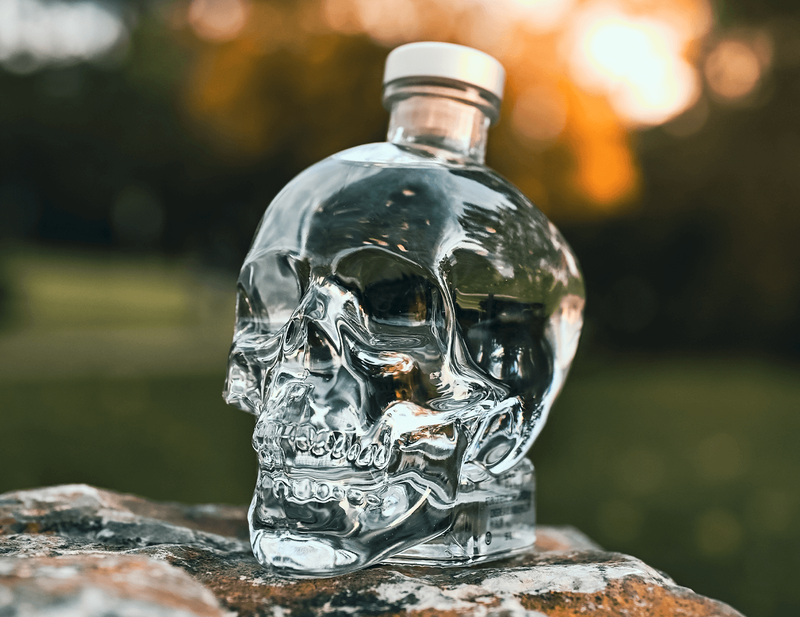
I queried as to why the tastes were being impeded and why in my opinion it didn't smell good. Why didn't they smell like anything? Why did they smell perfumey? Why was it such a neutral kind of taste when I knew that vodka could have a taste and can have an appeal on the tongue and the mouthfeel? Because I had an experience with a vodka they no longer make, and it was a good experience. And I asked, what was your secret? And they said, “well, we don't use fusel oils.” So I made further inquiries into this company. They stripped out all the fusel oils.
With Crystal Head Vodka, we were able to create a pure spirit that can get away with not using fusel oils, by using the right ingredients. And those ingredients, of course, begin with water. You have to start with pure, clean, beautiful water because vodka is an old Russian word for water. And so we found the cleanest source we could in Canada — the liquor distillery corporation of the province of Newfoundland and Labrador, the last state-owned still in the world. Their still has a pipe going right into the glacial aquifers of Newfoundland, which are the Ice Age and drifted down into the porous rock of Newfoundland.
It's got the purest, cleanest water in the world. Back before we understood the effect of pollution due to the manufacturing of steel, coal, railways and so on, the area of Newfoundland wasn’t affected by acid rain. In Vermont and New Hampshire and Ontario, and upstate New York, fish were dying in the 70s because of the acid rain. Newfoundland never got that. So we found the pure water. We start with peaches and cream corn from Chatham, Ontario. That's not the corn that you buy with the cattle corn. This is real supermarket corn with big, fat kernels that you buy in the summer for a roast or a feast. So taking those two ingredients and not adding anything at all, we came up with a beautiful, beautiful beverage that could live without the fusel oils. And we thought, you know, we really have something here.
Hopefully, you're well aware that in the alcohol industry, glycerol is a substance that is often used to mask the taste and the smell of the alcohol. And then, limonene is also added to increase the viscosity. And then they add sugar. And I thought, “hey, look, I'm a bartender, I want to make a cocktail.” I don’t want glyceride in my cocktail. I don't want citrus oil or limonene in my drink.
So I said, “What if we tried to do a pure spirit?” Let's strip out the glyceride, strip out the limonene, strip out the added sugar, and see what we have as a beverage. We tried it. We tasted it. And by God, there was a natural viscosity. It didn't feel fake. It smelled like good clean ethyl alcohol. It tasted like good clean alcohol, not masking the taste at all. But it was sweet because we used corn. I realized, hey, we got something here. This tastes great without limonene. Without glycerides. Without sugar.
The creation of this beautiful spirit was followed shortly after with a visit to John Alexander, my friend the artist. We were out at his loft in New York City one February evening with a blizzard blowing down on Broadway, and I was looking out the window. He asked me how the Patrón tequila was going. I told him it was going really well. He said, “Well, I've always wanted to do tequila in a skull.” And I thought that was a good idea. But I was loyal to JP DeJoria and wasn’t going to go and produce another tequila to compete with the Patrón that I bought into Canada. So, I thought, well, I’m producing this vodka. “Yeah, I know exactly what to put in that skull.” So, I go to John, and I said, “Draw that up for me and I’ll see what it looks like.” I turn back to the window and think in a month, he’ll come up with a drawing. Two minutes later, he hands me, on a napkin, this beautifully drawn skull with a base and a little smiling face on it.
I thought that it looked just like the Mitchell-Hedges skull from the Indiana Jones movie and other sources. I mean, long before the Indiana Jones movie, this was well-known in archeology. There are 13 crystal skulls — eight are in the possession of mankind, five are missing. They are imbued with almost a psychic and warm healing power. The one that John drew up looked like the Mitchell-Hedges skull, which was discovered by Anna Mitchell Hedges in Lubaantun in 1926. She was with her grandfather, and she reached into a hole, and felt this oilcloth and pulled it out, and there was this beautiful, polished skull. They figured it had been polished over several hundred years. They lived in Ontario near my farm, interestingly enough, but I never saw it for myself. But people said that when they walked into the Mitchell Hedges home in Ontario, she would open up the oilcloth and the black velvet cover to reveal the skull; people immediately had to sit down because they were immediately imbued with this warm, wonderful sort of healing, positive feeling.
So I thought, this is a perfect vessel for me to put my pure vodka into. And so, we began our manufacturing process, and we began to source bottle makers. Of course, it’s very difficult to make a skull. Even today, we'll run through 100 to 200 runs before we get the right one for the filling in Newfoundland. We run them, and then we get the perfect ones and send them in a container to Newfoundland. We still have trouble with that because it's very expensive — that bottle.
Once we got the bottle manufactured, we did a test market in the South — in Louisiana, Florida and Texas. We sold out of 5,000 cases in about a week. The distributors were reluctant to take it on. Not everybody loves the skull, even though ours is a smiling, happy skull. But, they took it on, and they couldn't believe the success and, of course, immediately ordered more. And now we're 10 years into the business. We're in 80 countries, and we've won awards all over the world.
We have a line extension with the wheat vodka, which comes in the Aurora, the mirror finish bottle. We have our corn vodka in our Pride bottle. We’ve been embraced by the same gender preference community because we're a Canadian vodka. Bar operators like Boys Town, San Francisco, Chicago, Boston, you name these LGBTQ+ clubs — they like us because we're Canadian. They love quality, they like premium, they like this constituency of consumers, and they know we're Canadian. We have a tolerance stance in Canada for people who want to love who they want without being defined. We've had gay marriage here now for a decade and a half almost, maybe even longer as I recollect.
So, we put the bottle out there and had a tremendous surge in sales at the beginning and then began to manufacture the bottle and distribute it. And as I said, now we’re in all kinds of bars all over the world; we’re in all kinds of countries.
Most recently, we released our Black Onyx finished bottle. In it, we've got an agave-based vodka. As you know, agave is from the Blue Weber Agave, and that's the piña that they make tequila out of. Now we do a vodka-style distillation on that, resulting in a product that’s not as hot. And we do a vodka style filtration, using our own distillation that we use on the other two. And the result is that we've come up with an award-winning agave-based vodka that's never been done before.
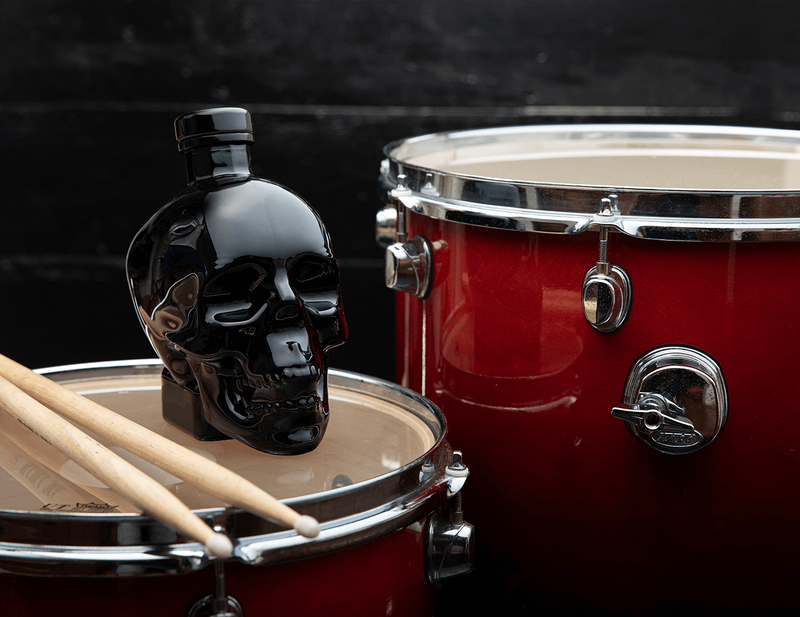
The Onyx was really the inspiration of our CEO, Jonathan Hemi, who thought, let's try this. Let's see if we can cross over and get a product that tequila drinkers and vodka drinkers will enjoy. And I said, well, I'm on all on board with that because by then, I’d been out of the Patrón for a few years, so there was no conflict. And we were able to do it.
People who love tequila now can have sort of a cross between a great agave-based drink and a vodka preparation. It's very long on the finish of the nose, it’s very earthy, and like our other notes, it's dry, and it's crisp. And the quality is impeccable. Because we're made by the government still. So, the Onyx is very successful. And this all started because I just wanted a better Margarita. Starting through that analysis of what vodka was and what to put in it. And going back to the old style of just water and the purified ethyl alcohol, and that's it, and it's working.
We have a beautiful natural viscosity, not an over viscosity. A beautiful mouthfeel. While our notes on the corn are dry, crisp vanilla, and our notes are dry, crisper, peppery, and anise on the Aurora, we introduce something wonderfully unique in Onyx with an earthy, tequila-like feel.
It prepared me very well because first of all, the spirits business is about entertainment. It's about sitting at a bar with a bartender talking about drinks. It's about sitting with your friends and buying drinks. It's about going to a nightclub and watching bottle service. It's about entertainment, you know, beverage alcohol is tied with entertainment all over our planet — in clubs and places where music is being performed, like concert halls and venues. So it was not too far a leap for me to go, “Okay, I know how to go out the door and sell with my public profile. I'll do that.”
What I did was I went into the liquor stores, and I signed bottles all over North America. So here, with the use of celebrity recognition, it's all fun and entertainment anyway. And I could have direct contact with the consumer; see what they were wearing, see what they were listening to, see what their kids looked like, and what they looked like. This front-line view of the consumer was invaluable to us when we were building it.
So, I had a Freightliner tractor with an apartment on the back, just like you'd see that would haul a NASCAR kit. While I didn't have the NASCAR vehicle or the trailer in the back with the mechanics, I had the front part of it. I had this Freightliner tractor with the head all over it that looked like a delivery truck. And on the back was an apartment and offices and a bedroom. This gave me the ability to travel all over North America in a period of a couple of years and hit all the major markets and the distributor houses. We also have an importer Infinium Spirits, our various distribution houses and multiple bar operators around the country to expand our market reach.
With this vehicle, I was able to visit all of these places. I had them come on board to be able to do a tasting, and make the sale. And it was a magnificent use of the truck, the logo, the brand, the impact of the skull, and me at the wheel. I can pull up in the thing at the liquor store, and people get in the driver's seat. And it made a great, great picture. That's the only way that you're going to get someone to pick up and notice the vodka.
I'm able to go in and say, “I own this company.” I'm not just a spokesman. I'm an owner. I’m here to tell you that I wouldn't put my name as a Blues Brother, as a Ghostbuster, a Conehead, and an extension of all the fine entertainment that my collaborators and I have made. Those are Triple A Entertainment properties, and I wouldn't go out and sell a vodka or anything else if it weren't Triple A quality and a guaranteed fun, good time in the package and in the fluid inside.
What has been astounding is the ruthlessness and the competition. I had a distributor once who handled two territories. He had other interests in one territory, and he had us in another territory. And he said, “I've got you here in the Northeast, and we'll do a great job for you in the Northeast. No problem. We're gonna blow your brand up; you’ve got a great brand.” And then, in the next breath, he says to me, “but in Florida we're gonna kill you.” Because he had another vodka in Florida, so he's gonna love me in one area and hate me in another. So that ruthlessness is certainly something to contend with. But at the same time, the creativity is impressive. But you can't just have a gimmick package. You have to back it up.
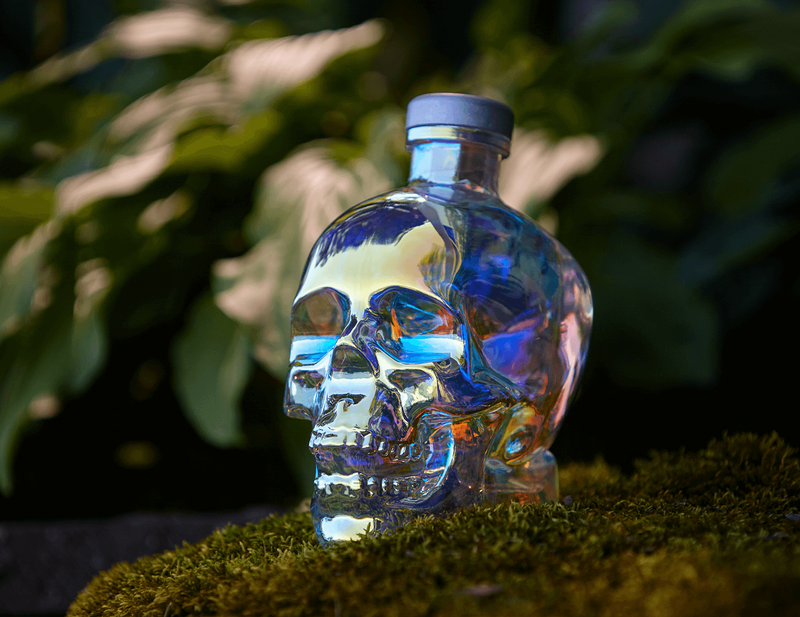
Another revelation is that distribution requires a lot of motivation. Sometimes for a small company like ours, it can't be paid to play. We have to figure out other ways to motivate distributors. So, House of Blues, instead of packages, it’s the personal visits from me where I come into the market and service the market and move some cases for them and make the numbers look good. I will do that. But I have to do that. So that's a revelation.
And then it's hard work, and it doesn't come easily. These brands don't get built in a couple of years. JP DeJoria for example started Patrón Tequila 20 years ago. And I have no illusions about how hard I'm going to have to continue to work to maintain traction, goodwill, and quality friendships in the industry. We're not really relaxing. We're a hardy Canadian company. And we're worldwide now. We've got excellent management. And we're planning other neat things. Really neat things are coming up.
We have an idea for where we want to marry the vodka properly and organically to some flavors. Now, you see, we have a purity story. And I don't want to compromise that. For us to just go and do flavors, which are often unpopular with distributors, if you can believe that, because I was asked, “are you gonna do flavors?” at one distribution house. I said, “No, we're in the vodka flavored vodka business.” And you know what, I got a standing ovation. They were cheering because these companies come along and say, “Oh, here's your lime-flavored vodka.” And the distributor says, ok, I can sell that. And then, in the next three months, the company says, “Here's your vanilla.” And the distributors say, “Oh, I just got the lime moving. Now you want me to move the vanilla.” And then they come in and say, oh, here's a chocolate, or here’s so-and-so. So it floods these distributors with tough obligations.
Whereas we're just a simple old vodka-flavored vodka business. We can't just go and play with our vodka; I believe that it compromises that purity. But we may be able to do it in another way where we can marry our pure vodka to a substance that gives the flavor; get the flavor profiles in substantial variety. We don't know yet.
Sometimes if I'm going out with friends in the evening, I will start off with a 1954 Vintage Long Island Railway Bar Cart Martini. Between basically the 30s through just a couple of years ago, you could get on the Long Island Railroad and, with your Wall Street Journal folded in a single column, commute from the suburbs of Connecticut, New Jersey, or New York into the city. And you could have a martini served to you by a steward with white gloves. All the ice, everything made at your seat or in the bar car. Usually in the bar car, right? Yeah, I mean, how civilized is that? That's gone now.
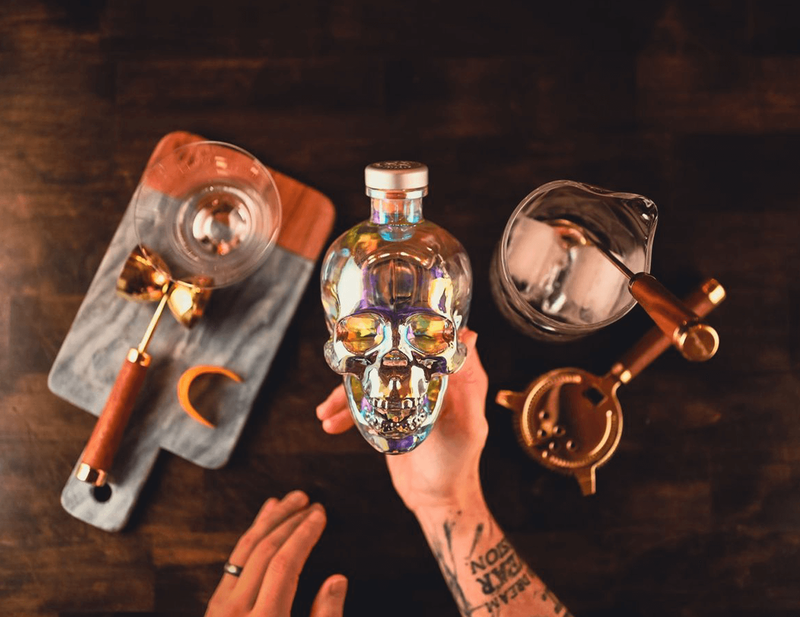
So, what I do is pour two and a half to three ounces of the vodka, shaken with ice chips, a rinse of white vermouth in the glass and throw it out. Ice the glass and shake it good. And then I either do a pearl onion and an olive, or I'll do a twist of lemon. The bar car martini — that's a beauty.
I also love the Crystal Driver, which is just two and a half ounces, maybe three ounces of vodka. Pour it over ice in a tumbler, and then you squeeze by hand a tangelo, tangerine, or clementine — about six or seven of the small ones in there. And the look you should get is as if you're cracking an egg, and that yellow citrus is going in there as if the yolk of the eggs are going into the glass. And you can get that feel by slowly pouring it in there and then adjust with a slight little stir. It's really a beautiful, simple-to-make cocktail.
And then I like the White Cosmo - a little egg white, white cranberry juice, and vodka that is shaken. The result is a foamy cocktail in a glass, sometimes garnished with a cherry. That is a lovely drink. We sold gallons of that at the Wynn Casino in Vegas. They did a program, and it was really, really popular.
It's a beautiful skull and can be used for things after, like candles.
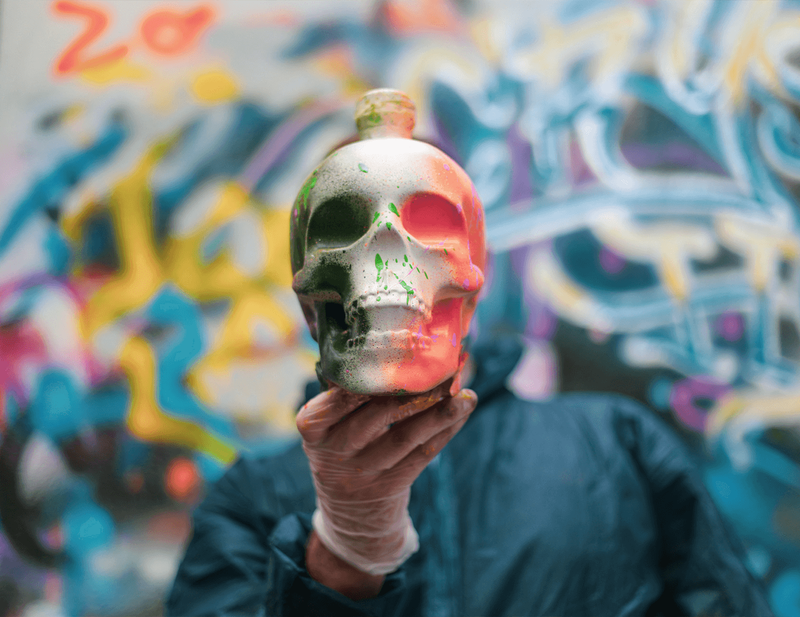
On the website, you can see some of the things that artists have done with the bottle. We have thousands and thousands of people who have taken them and made chandeliers and lamps, and put them on motorcycles and Fenders, and covered them in rhinestone leather with a zipper. I've seen gold plated, brass plated, silver plated. Just all kinds of artists have expressions of themselves.
One of the most unexpected examples was a rhinestone bottle all covered in beautiful rhinestones with a kind of a Coldstream Guards plume at the top. You know the guards that have those silver helmets with the Queen, and they have that white horsehair plume that comes off the top of the helmet? It looked like that; it was a spray of thin metal fibers that look like a plume out of this rhinestone skull. It was just beautiful. Just beautiful.
Well, for the bartenders, grab a bottle of Crystal Head by the face and throw it up in the air. Be assured of the quality that you will be serving to your guests. Have fun knowing that you've got a zero-additive product; that there's no other vodka like this. So bartenders should know — play with the skull, name it. And when that bottle is finished, take it home and give it new life.
I would say to the consumer (our at-home bartenders), have fun with it, knowing that your home bar will look good and that you're going to be able to make a range of vodka cocktails with the assurance that you don't have those additives, limonene, glyceride, or sugar, in your home cocktail.
I've had so much fun in the business! The people I've met, traveling in the Headmobile, going to signings and having 600 to 800 people lined up, where I sign all the pictures from my past career. And seeing these people who build businesses from nothing, and having these relationships, walking into warehouses, and seeing the cases stacked way up high.
And the people that have made this happen are simply amazing. When we went to Australia, there were 4,000 or 5,000 cases stacked to the ceiling. And I'm thinking, wow! People made this! We have 30 people on the line manufacturing even in full on COVID times. And with the home office and everything, we have about 20 people. So, we've got 50 employed, and making a good living and being part of something that they can be proud of. Imagine being able to say that you built Grey Goose or you built Patrón. These people are gonna be able to say they helped build Crystal Head. It’s truly been a beautiful journey.
Starting at $160.00